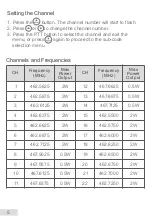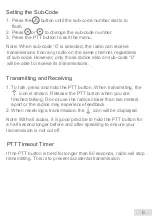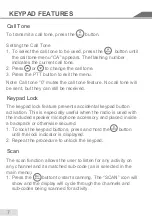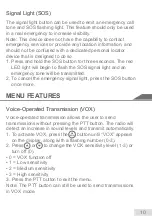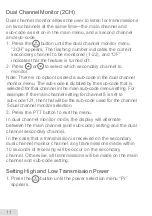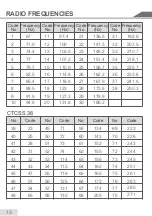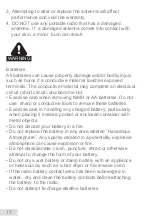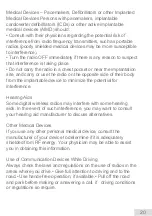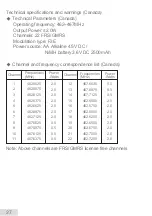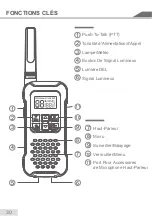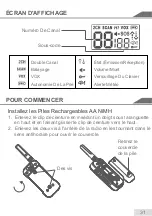
Any changes or modifications not expressly approved by the
party responsible for compliance could void the user's authority
to operate the equipment.
This device complies with part 15 of the FCC Rules. Operation
is subject to the following two conditions: (1) This device may
not cause harmful interference, and (2) this device must accept
any interference received, including interference that may
cause undesired operation.
Note: This equipment has been tested and found to comply
with the limits for a Class B digital device, pursuant to part 15
of the FCC Rules. These limits are designed to provide
reasonable protection against harmful interference in a
residential installation. This equipment generates, uses and can
radiate radio frequency energy and, if not installed and used in
accordance with the instructions, may cause harmful
interference to radio communications. However, there is no
guarantee that interference will not occur in a particular
installation. If this equipment does cause harmful interference to
radio or television reception, which can be determined by turning
the equipment off and on, the user is encouraged to try to
correct the interference by one or more of the following
measures:
• Reorient or relocate the receiving antenna.
• Increase the separation between the equipment and receiver.
• Connect the equipment into an outlet on a circuit different from
that to which the receiver is connected.
• Consult the dealer or an experienced radio/TV technician for help.
Safety Information for Radios
Your wireless handheld portable transceiver contains a low power
transmitter. When the talk button is pushed, it sends out radio
frequency (RF) signals. The device is authorized to operate at a
duty factor not to exceed 50%. In August 1996, the Federal
Communications Commissions (FCC) adopted RF exposure
guidelines with safety levels for handheld wireless devices.
Important
FCC RF Exposure Requirements: For body-worn operation, this
radio has been tested and meets the FCC RF exposure guidelines
when used with accessories supplied or designated for this product.
Use of other accessories may not ensure compliance with FCC RF
exposure guidelines. Use only the supplied antenna. Unauthorized
antennas, modifications or attachments could damage the
transmitter and may violate FCC regulations.
Normal Position
Hold the transmitter approximately 25 mm from your face and
speak in a normal voice, with the antenna pointed up and away.
Batteries
All batteries can cause property damage and/or bodily injury
such as burns if a conductive material touches exposed
terminals. The conductive material may complete an electrical
circuit (short circuit) and become hot.
• Exercise care when removing NiMH or AA batteries. Do not
use sharp or conductive tools to remove these batteries.
• Exercise care in handling any charged battery, particularly
when placing it inside a pocket or enclosed container with
metal objects.
• Do not discard your battery in a fire.
• Do not replace the battery in any area labeled “Hazardous
Atmosphere”. Any sparks created in a potentially explosive
atmosphere can cause explosion or fire.
• Do not disassemble, crush, puncture, shred or otherwise
attempt to change the form of your battery.
• Do not dry a wet battery or damp battery with an appliance
or heat source, such as a hair dryer or microwave oven.
• If the radio battery contact area has been submerged in
water, dry and clean the battery contacts before attaching
the battery to the radio.
• Do not attempt to charge alkaline batteries
WARNING
3. Attempting to alter or replace the antenna will affect
performance and void the warranty.
4. DO NOT use any portable radio that has a damaged
antenna. If a damaged antenna comes into contact with
your skin, a minor burn can result.
17
Summary of Contents for SCOUT 2W
Page 56: ......



